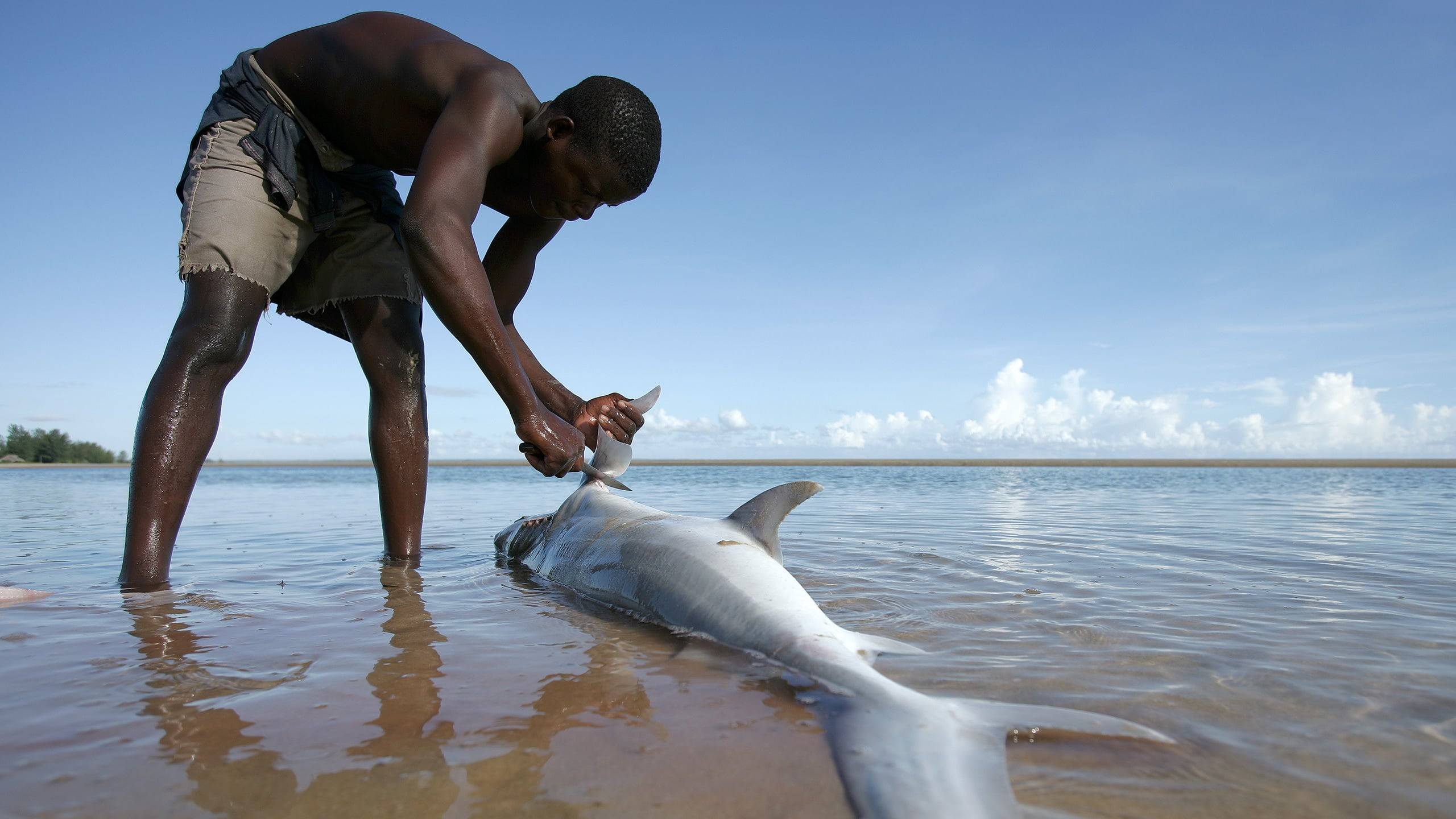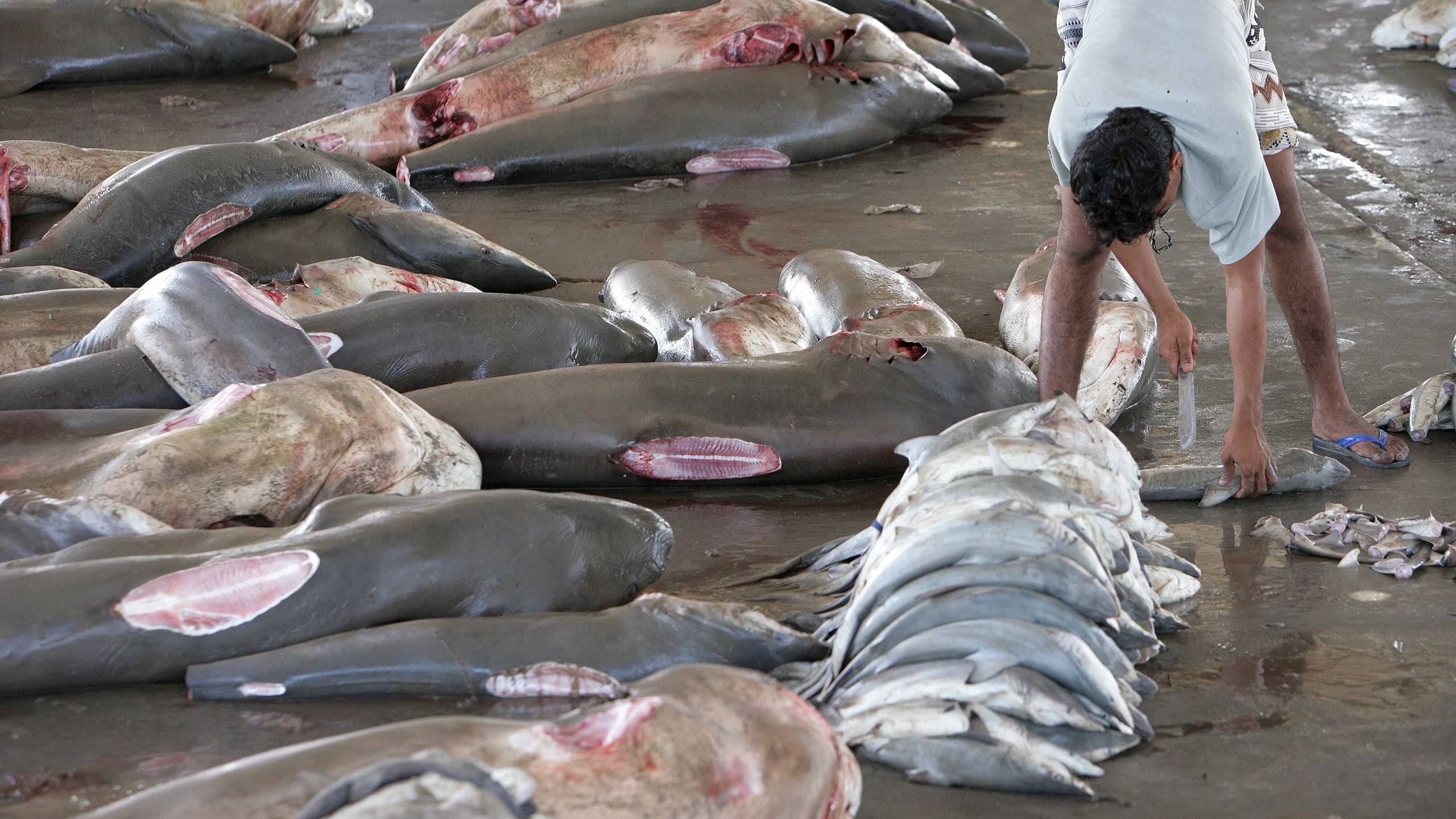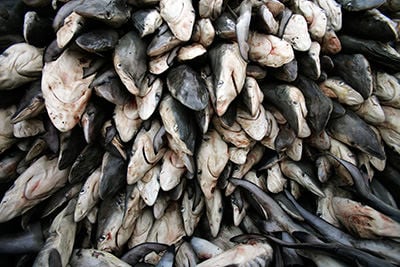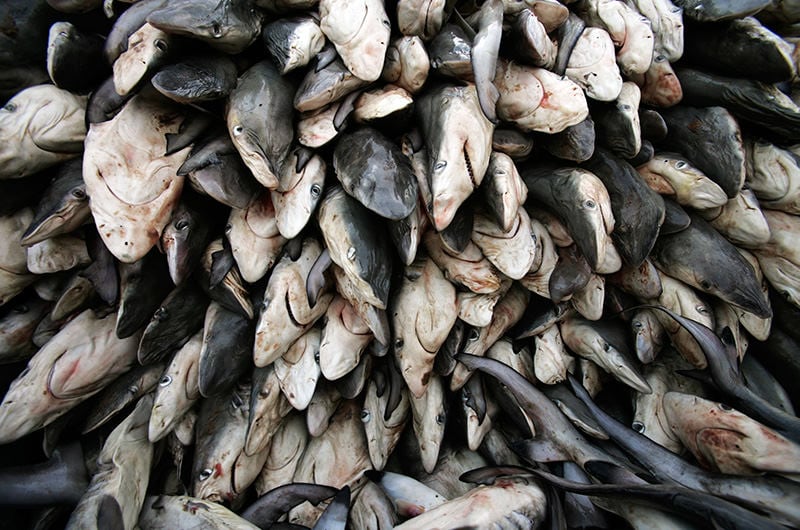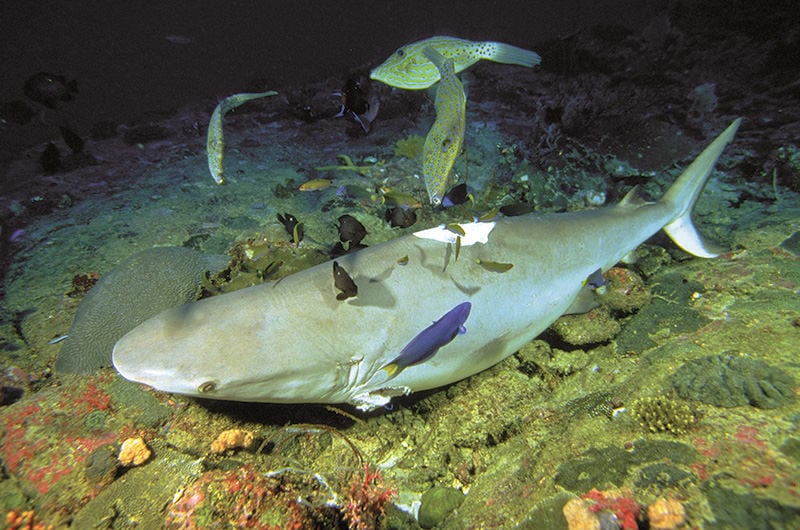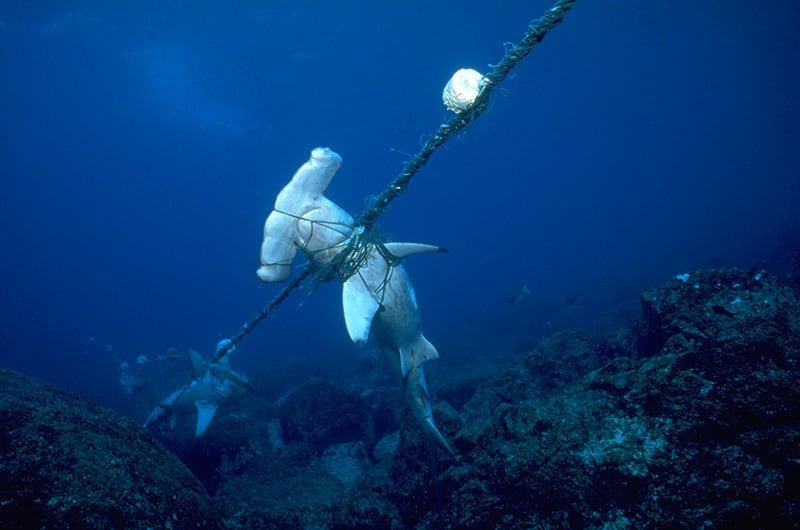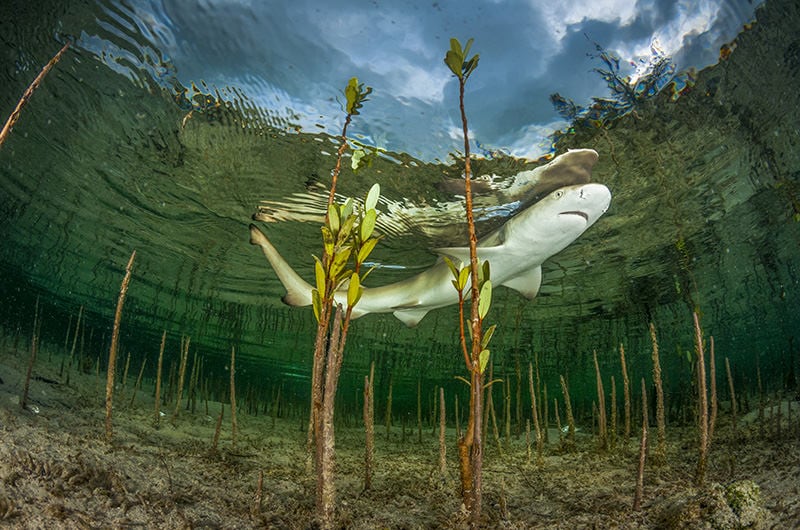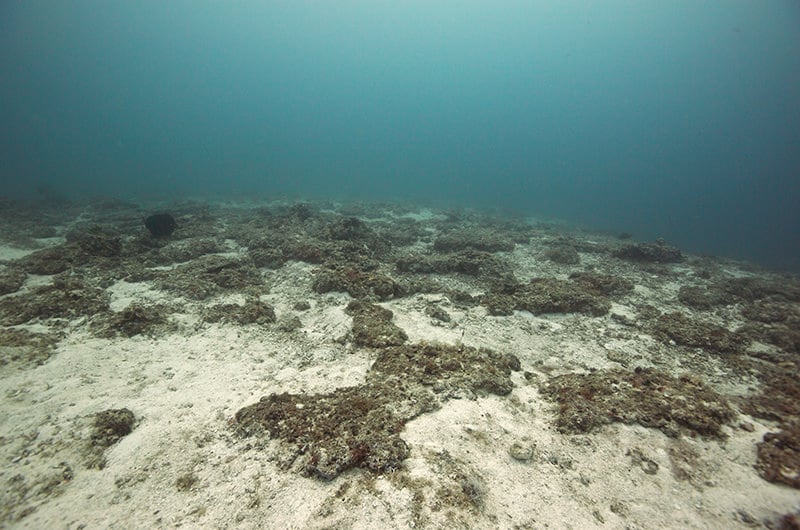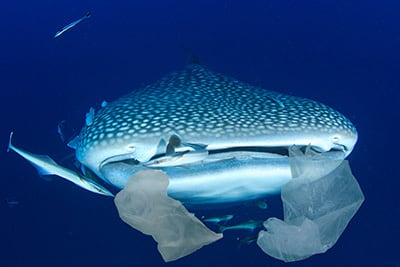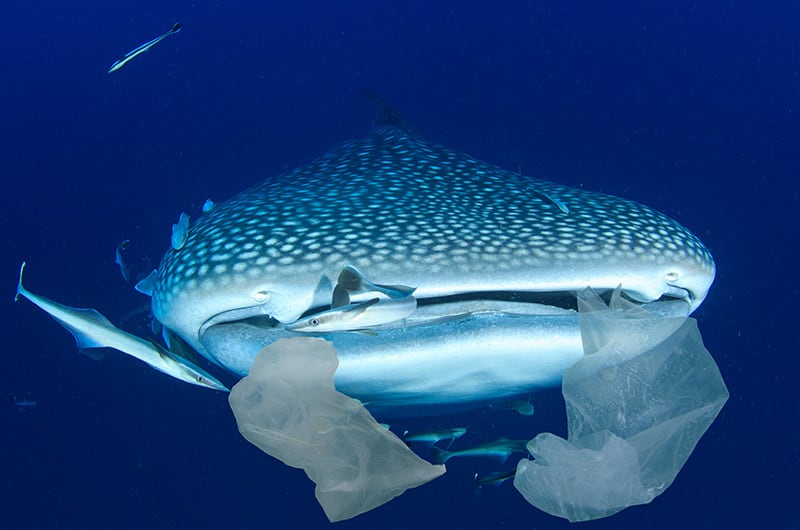Sharks are not a threat to us. We are a threat to sharks!
The worldwide situation of sharks is highly critical. In some regions, e.g. the Mediterranean, stocks of certain shark species have shrunk to 10-20 % of their former size. Every year 1.4 million tons of sharks are fished from the oceans.
But overfishing is not only threat to sharks. Mangroves, the nurseries of the sharks, are being cleard. Reefs, the home of many shark species, are dying due to global warming. Studies on the effects of micro- and nanoplastics on shark health and fertility are only just starting.
And still circulating is the myth that sharks do not get cancer. Their cartilage is thus marketed as an anti-cancer drug. But sharks do get cancer. Over 40 types of tumors are known to affect them.
Sharks killed since the beginning of 2024
Sharks killed since you began viewing this page
Main reasons for shark deaths
Fisheries
Each year 100 million sharks die worldwide in fishing nets or on longlines. That's almost 275,000 sharks per day. 73 million commercially fished sharks are destined mainly for the Asian fin markets and these are just the figures for commercial fishing.
Finning
Fins from 73 million commercially caught sharks are destined primarily for Asian shark fin markets. Finning is the cruel method of cutting off a shark's fins, ofte while it is still alive. The body of the shark is then thrown overboard as excess ballast. Since the sharks that are still alive can no longer swim, they suffocate miserably.
Bycatch and ghost nets
International fishing fleets primarily target bony fish, especially important being the expensive tuna and other big fish. But where big fish are caught, sharks are also caught. Many sharks die in the nets and longlines of international fishing fleets and are disposed of as bycatch, mostly dead.
"Ghost nets" and generally "ghost gear" also pose great danger. These are nets and lines that have torn loose and drift freely in the sea.
Mangroves: Shark nurseries disappear
The extensive root systems of mangrove trees and their shoots form a fine net that protects the coasts from erosion through tides and storms. This net of roots serves many shark species as a nursery for their young. In the fine root net, small young animals are protected from larger predators.
In the last 50 years, 50% of all mangrove forests have disappeared.
Global warming
Global warming exposes the oceans to particular stress. The annual average water temperature, which is very critical for coral reefs, is rising. Extreme weather such as storms and hurricanes additionally damage the already weakened reefs. Many reefs suffer and with them the reef communities. Sharks are at home in these reef regions and lose their food and livelihood.
Plastics, microplastics and nanoplastics
Eight (8) million tons of plastic waste are washed into the oceans every year. Their size ranges from huge plastic sheets and ghost nets to nanoplastics in the range of less than 1 micrometer. Sea creatures can get entangled in this plastic waste or eat it and then suffocate or starve to death.
Nanoplastics are particularly dangerous because they are so small that they accumulate in organs and cells.
Eating shark cartilage helps fight cancer
Sharks get cancer. At least 42 benign and malignant tumor types are known from scientific literature in cartilaginous fishes. Eating shark cartilage preparations is just as ineffective against cancer as powdered pig's ears. Only pigs are not threatened worldwide.
Shark products
In many countries it is prohibited to land only shark fins, instead only complete sharks may be unloaded. The purpose is to prevent cruel finning. Since fins are the commercially most valuable part of the sharks, various other shark products are sold to increase the profit of the whole shark business.
Shark products are often found in unexpected places, for example, in restaurants, clothing stores, accessories, dog food, fertilizer, gelatin or cod liver oil.




